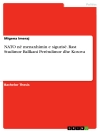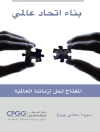Conflict is inherent to all human and inter-state relations, but it is not inevitable. Since the end of the Cold-War, the prevention of conflict escalation into violence through management and resolution has become a fundamental objective of the international system.
So how does prevention work when it works, and what can be done when tried and tested practices fail? In this book, I. William Zartman offers a clear and authoritative guide to the key challenges of conflict prevention and the norms, processes and methods used to dampen and diffuse inter and intra-state conflict in the contemporary world. Early-stage techniques including awareness de-escalation , stalemate , ripening , and resolution , are explored in full alongside the late or crisis stage techniques of interruption , separation and integration . Prevention, he argues, is a battle that is never won: there is always more work to be done. The search for prevention – necessary but still imperfect – continues into new imperatives, new mechanisms, new agents, and new knowledge, which this book helps discover and apply.
Table des matières
Introduction: The Fatal Attraction of Prevention
1. The Inevitability and Value of Conflict
2. The Ubiquity of Prevention
3. Norms for Long-term Prevention
4. Mechanisms of Mid-term Prevention
5. Methods of Pre-Crisis Prevention
6. Means of Late (And Earliest) Post-Crisis Prevention
7. Conclusions: The Elusive Quest for Prevention
Notes
Suggestions for Further Reading
A propos de l’auteur
I. William Zartman is Professor Emeritys at John Hopkins University












